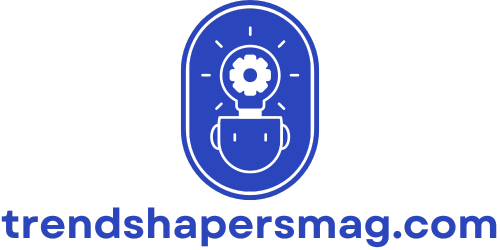Table of Contents
ToggleManaging finances can feel overwhelming, but a monthly budget planner simplifies the process. With the right tools, anyone can take control of their spending and savings, paving the way for financial stability. This essential resource helps individuals track income, expenses, and savings goals, creating a clear picture of their financial health.
By breaking down monthly expenses and setting realistic limits, a budget planner empowers users to make informed decisions. Whether it’s saving for a vacation, paying off debt, or preparing for unexpected costs, having a structured plan in place is crucial. With a monthly budget planner, achieving financial goals becomes not just a dream but an attainable reality.
Overview of Monthly Budget Planner
A monthly budget planner serves as a practical tool for managing finances. It helps individuals monitor income, categorize expenses, and set savings goals. By outlining financial inflows and outflows, it creates a clear picture of one’s financial situation.
Utilizing a monthly budget planner enables individuals to make informed decisions based on data. Users can allocate funds for essentials, such as housing and utilities, while designating amounts for discretionary spending. This structured approach prevents overspending and encourages responsible financial habits.
Budget planners often include sections for tracking debt payments and savings contributions. By regularly updating these sections, users can assess progress toward financial objectives, such as building an emergency fund or saving for major purchases.
With a monthly budget planner, achieving financial stability becomes more attainable. The ability to visualize financial goals fosters motivation and accountability.
Benefits of Using a Monthly Budget Planner

Using a monthly budget planner offers numerous advantages that contribute to better financial management. It promotes financial awareness and fosters strong saving habits, enabling individuals to reach their financial goals effectively.
Improved Financial Awareness
Improved financial awareness results from consistent tracking and categorization of expenses. A monthly budget planner highlights income sources alongside various spending categories, allowing individuals to identify trends. By visualizing where money goes, users can spot unnecessary expenditures and adjust their budgets accordingly. For instance, tracking dining expenses may reveal overspending, prompting a shift toward cooking at home. Additionally, it encourages regular reviews of financial health, fostering accountability and informed decision-making.
Enhanced Saving Habits
Enhanced saving habits emerge from the structured approach a monthly budget planner provides. Setting specific savings goals makes saving a priority within the budget. As individuals allocate funds toward these goals, they build a sense of accomplishment and motivation. For example, designating a portion of monthly income for an emergency fund or future travel can create a clearer path to achieving those objectives. Furthermore, consistently monitoring savings progress reinforces positive behaviors, making it easier to cultivate long-term financial discipline.
Features to Look for in a Monthly Budget Planner
Selecting the right monthly budget planner involves understanding key features that enhance usability and effectiveness. Here are essential aspects to consider:
User-Friendly Interface
A user-friendly interface ensures easy navigation and understanding of financial data. Planners with intuitive designs provide clear categories for income, expenses, and savings. Visual elements, such as graphs or charts, help in quickly analyzing spending trends. Search functions and well-organized layouts contribute to efficient budgeting, allowing users to focus on their financial goals without confusion.
Customization Options
Customization options enable users to tailor the budget planner to fit their unique financial situations. Planners that allow users to add or remove categories cater to individual spending habits and priorities. Users can set personalized saving goals and adjust budget limits according to changing financial circumstances. Flexible features enhance the planner’s relevance, making it a more effective tool for managing finances.
Types of Monthly Budget Planners
Monthly budget planners come in various formats, each offering unique advantages. Understanding these types helps individuals choose the best option for their financial management needs.
Digital vs. Paper Planners
Digital planners feature tools that allow for easy updates and real-time tracking of finances. They often include integrations with bank accounts, automated expense tracking, and data visualization. For example, platforms like Mint and YNAB (You Need a Budget) offer comprehensive features for managing budgets seamlessly.
Paper planners, on the other hand, provide a tactile experience that some users prefer. They allow for personalized note-taking and physical engagement with financial goals. Options such as printable budget sheets and dedicated notebooks give individuals the flexibility to customize their planners.
Apps vs. Traditional Planners
Apps offer convenience and accessibility, allowing users to manage their budgets from anywhere. Popular budgeting apps typically include notifications for bill reminders and spending alerts. They’re especially useful for individuals who want to track their finances on-the-go.
Traditional planners, which can be physical binders or booklets, promote a more structured approach to budgeting. They often encourage users to engage with their finances by manually entering income and expenses. This approach can foster a deeper understanding of spending habits and financial goals.
Each type of planner holds distinct benefits; users can choose based on personal preferences and financial management styles.
A monthly budget planner serves as a vital tool for anyone looking to take control of their finances. By providing a structured approach to tracking income and expenses, it empowers individuals to make informed decisions and reach their financial goals. Whether opting for a digital or paper format, the right planner can enhance financial awareness and promote responsible spending habits.
Regular use of a budget planner fosters discipline and accountability, making it easier to identify spending trends and adjust as needed. Ultimately, embracing this practice lays the foundation for long-term financial stability and success. With the right planning, financial aspirations can become achievable realities.







